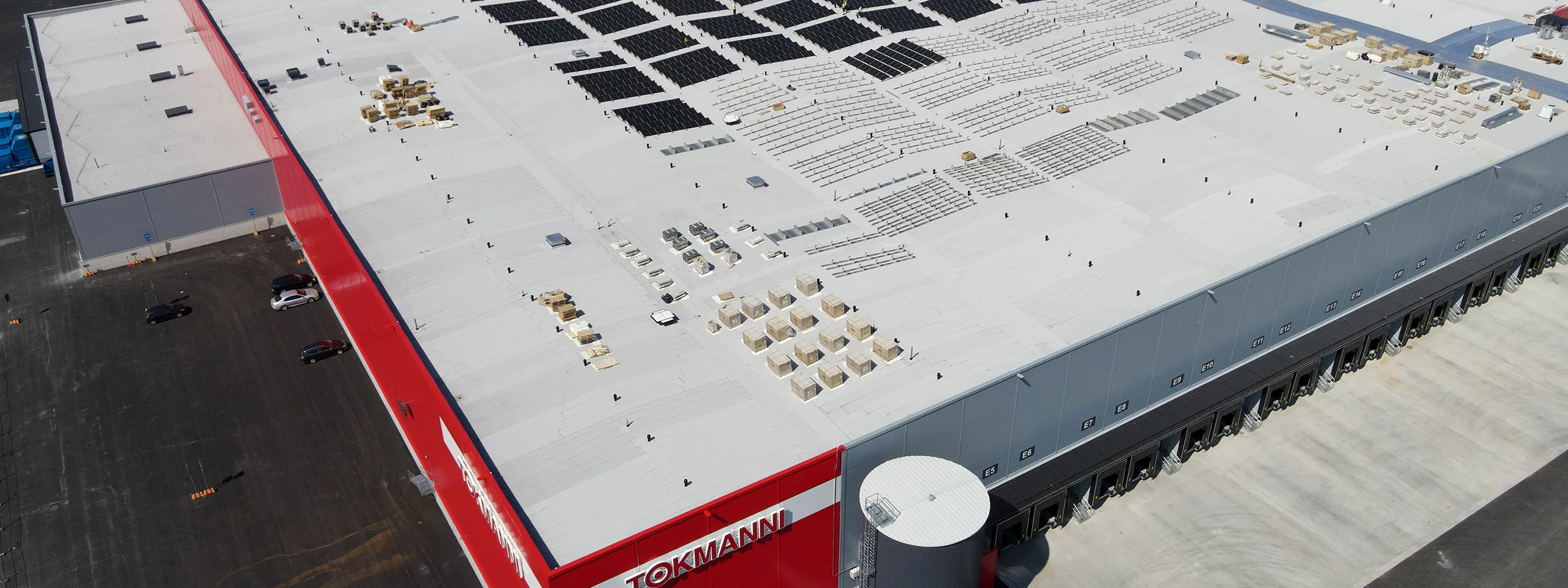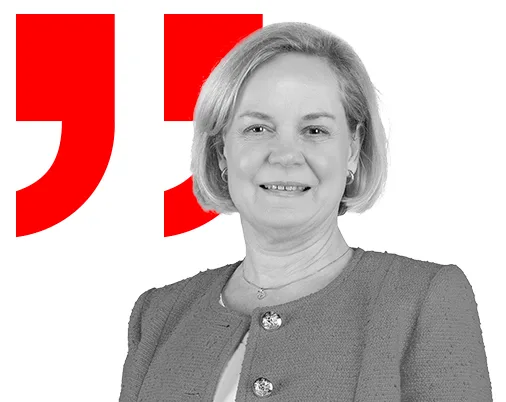
emissions

“We continuously seek ways to reduce carbon dioxide emissions.”
By, for example, transitioning to EcoDelivery transport, emissions from our Tokmanni segment’s Asian transport were 65% lower in 2024 compared to the previous year.
The Group’s new science-based climate targets will be submitted for approval to SBTi during 2025.
Kaisa Mattson, Head of Sustainability
Our emissions mainly originate from heating our stores. We measure emissions precisely in our stores, administration and logistics centres, as well as in domestic and international transportation of products.
In 2024, the Tokmanni segment’s scope 1 emissions from its own operations decreased by 17.5% and market-based scope 2 emissions by 19.1% compared to 2023. Key actions to achieve this goal included
- improving the energy efficiency of buildings
- installing solar power plants
- increasing the use of renewable energy.
For example, smart automation reduced gas procurement costs by over 30% in a pilot store, which corresponds to a reduction of 14 tCO2-eq in emissions. The energy efficiency of properties has also improved, and district heating consumption has decreased. The centralization of logistics warehouse operations in Mäntsälä in Finland, where our Tokmanni variety discount retail chain has two logistics centres, has also reduced the need for district heating.
At the end of 2024, there were solar power plants installed in about 70 of our stores and on the roofs of our logistics centres in Mäntsälä, Finland. Whenever possible, we aim to install new solar panels when opening new stores or renovating old ones. In 2024, we ordered the installation of new solar panels on the roofs of six stores. Altogether, our Tokmanni segment’s solar panels produced a total of 6,195 MWh of solar electricity in 2024.
To reduce energy and water consumption, our Tokmanni variety discount retail chain has increased building automation in stores. During 2024, we improved building automation in a total of 17 stores and also replaced the outdoor lighting with LED lights in 20 Tokmanni stores. Additionally, in 2024, we decided to implement the EG EnerKey energy management system.
In addition to the solar electricity we produce and the carbon dioxide-free electricity we purchase, the carbon dioxide emissions from our Tokmanni segment’s electricity use were covered by carbon dioxide-free energy origin certificates in 2024.
Aiming to keep transport emissions at the 2015 level in relation to revenue
In 2024, 17% (23%) of the Tokmanni segment’s product transport emissions were caused by Asian freight, 69% (61%) by domestic (Finnish) truck transport, and 14% (14%) by European sea and truck transport. We aim to centralize transport with long-term partners, with whom we continuously seek ways to reduce carbon dioxide emissions and other environmental impacts of transport. Centralization allows us to combine deliveries, optimize transport routes, and better utilize the carrying capacity of vehicles.
Our Tokmanni segment’s goal is to keep transport greenhouse gas emissions at the 2015 level relative to revenue (11.5 t CO2 / M Eur) despite growth and expansion of the store network. The target was not achieved in 2024, as transport emissions were 14.3 t CO2 / M Eur. Domestic (Finnish) transport emissions increased, but emissions in international freight transport decreased. By transitioning to EcoDelivery transport, emissions from our Tokmanni segment’s Asian transport were 65% lower in 2024 compared to the previous year.
Tokmanni’s impactful climate work is based on climate targets in accordance with the Science Based Targets initiative (SBTi).
Our Tokmanni segment has achieved the emission reduction targets officially confirmed by SBTi to reduce its scope 1 and 2 emissions by 70% by 2025. At the end of 2024, our Tokmanni segment’s emissions from its own operations were 71.5% lower compared to the 2015 baseline level. The goal was achieved through long-term and systematic work by reducing energy consumption, increasing energy efficiency, investing in renewable heat, and investing in emission-free electricity. Our Tokmanni variety discount retail chain’s goal is also to be carbon neutral in its own operations in 2025.
Support from our suppliers is important
Most of the emissions from the products we sell are generated during their production and use. Measuring production and use emissions is challenging, and our ability to influence them is limited. Therefore, we encourage our suppliers to engage actively in climate work and set their own science-based emission reduction targets. By the end of 2024, 47.6% of our Tokmanni segment’s suppliers, based on purchases, were committed to science-based climate targets. We continue discussions with suppliers to reduce emissions in the supply chain.
In 2024, our Tokmanni Group calculated the emissions for the entire Group, both for its own operations (scope 1-2) and for the value chain (scope 3), and set emission reduction targets in accordance with SBTi criteria. The Group’s new science-based climate targets will be submitted for approval to SBTi during 2025.
We are also developing the transparency and environmental responsibility of our supply chain as part of international initiatives. We are a member of the environmental program amfori BEPI and aim to encourage our suppliers in risk countries to join the program. BEPI’s environmental assessment is a good first step toward reducing factory-specific environmental impacts.
We combat climate change together with our suppliers
We take climate change seriously, and reducing emissions is one of our key sustainability priorities at Tokmanni Group. Since we do not manufacture the goods we sell, it is particularly important that we encourage our suppliers to set ambitious science-based climate targets.

Which sustainability topics would you like us to tell more about?
Tell us, for example, via Tokmanni’s customer service, we would like to hear from you!
